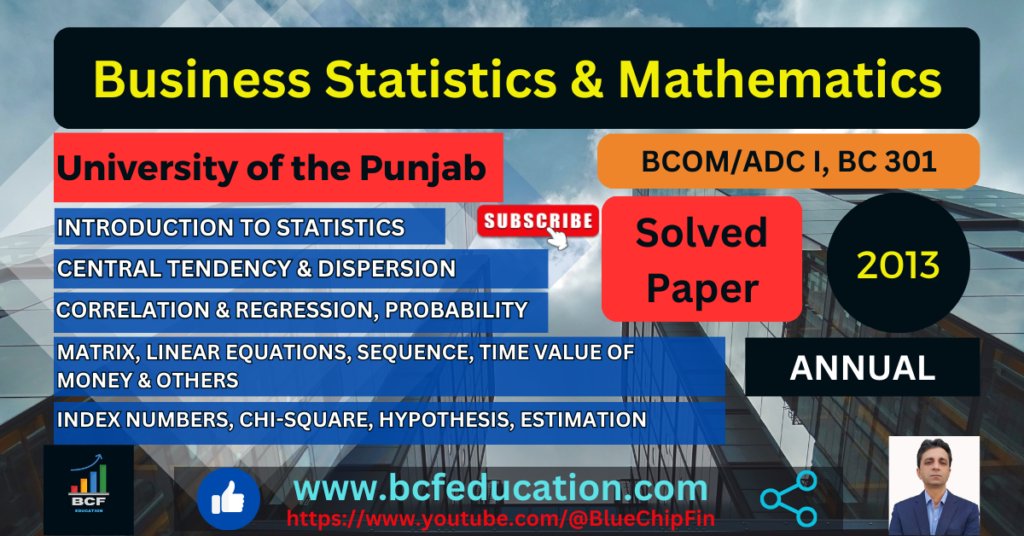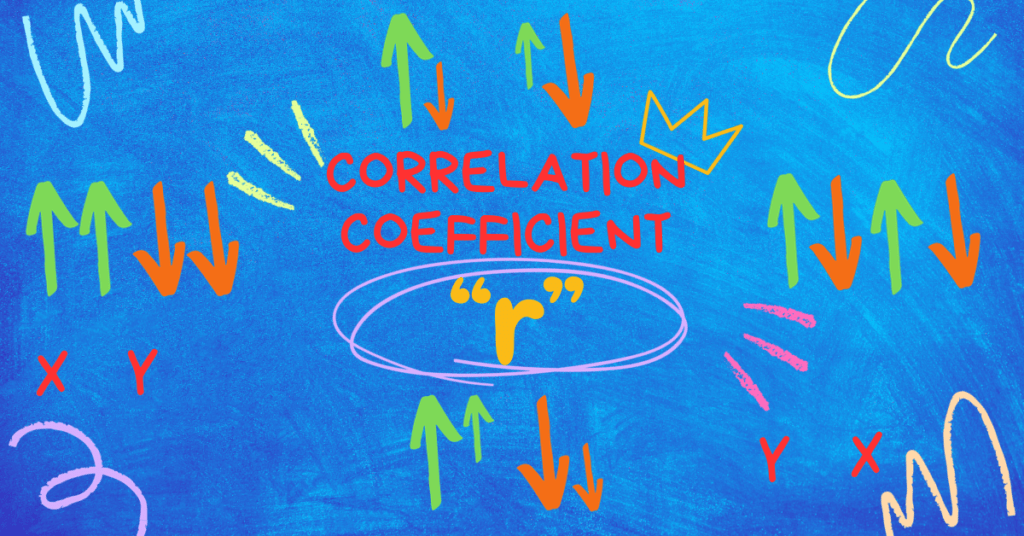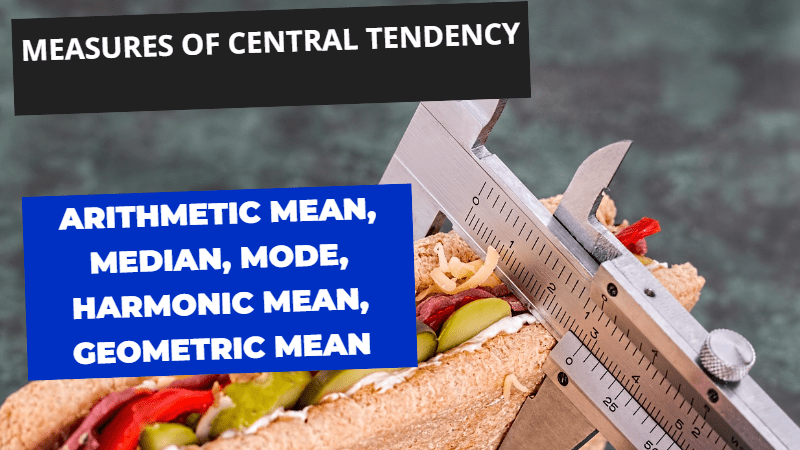In this Post, we are going to discuss the Paper of Business Statistics and Mathematics Solved Paper 2013, Punjab University, BCOM, ADCI in which Measures of Central Tendency, Measures of Dispersion, Correlation & Regression, Index Numbers, Matrix, Arithmetic Progression, Geometric Progression, Simultaneous Linear Equations, Annuity, Quadratic Equation is discussed and solved.
Other solved papers of Business Statistics & Mathematics
- Solved Paper 2007 Punjab University
- Solved Paper 2008
- Solved Paper 2009
- Solved Paper 2010
- Solved Paper 2011
- Solved Paper 2012
Solved by Iftikhar Ali, M.Sc Economics, MCOM Finance Lecturer Statistics, Finance and Accounting
Business Statistics and Mathematics Solved Paper 2013, Punjab University, BCOM, ADC I
Table of Contents
Section I Business Statistics
Q.1 Weight of 175 male students at a university are given in the following frequency table…..Calculate Karl Pearson’s and Bowley’s Coefficient of Skewness.
Q.1 Weight of 175 male students at a university are given in the following frequency table:
| Weight | Frequency |
| 118-126 | 20 |
| 127-135 | 35 |
| 136-144 | 49 |
| 145-153 | 32 |
| 154-162 | 25 |
| 163-171 | 14 |
Calculate Karl Pearson’s and Bowley’s Coefficient of Skewness
Solution:
| Classes | Class Boundaries | X | Frequency (f) | fx | fx² | C.F |
| 118-126 | 117.5-126.5 | 122 | 20 | 2440 | 297680 | 20 |
| 127-135 | 126.5-135.5 | 131 | 35 | 4585 | 600635 | 55 |
| 136-144 | 135.5-144.5 | 140 | 49 | 6860 | 960400 | 104 |
| 145-153 | 144.5-153.5 | 149 | 32 | 4768 | 710432 | 136 |
| 154-162 | 153.5-162.5 | 158 | 25 | 3950 | 624100 | 161 |
| 163-171 | 162.5-171.5 | 167 | 14 | 2338 | 390446 | 175 |
| ∑f = n= 175 | ∑f = 24941 | ∑ fx² = 3583693 |
![]()
Selection of Model Class for Median
![]()
![]()
![]()
![]()
![]()
Model Class for Mode
Maximum Frequency is 49 so L = 135.5, fm =49, f1 =35, f2 =32 & h=9
![]()
![]()
![]()
![]()
Selection of Model Class for Q1
![]()
![]()
![]()
![]()
Selection of Model Class for Q3
![]()
![]()
![]()
![]()
![]()
![]()
![]()
![]()
![]()
![]()
![]()
![]()
![]()
![]()
![]()
Q.2 Calculate weighted index number of prices for the year 2012 from the following data taking 2008 as base and using formulae recommended by: Laspeyre, Fisher, Paasche’s and Marshall….
Q.2 Calculate weighted index number of prices for the year 2012 from the following data taking 2008 as base and using formulae recommended by: Laspeyre, Fisher, Paasche’s and Marshall
| Year | A | B | C | |||
| Price | Quantity | Price | Quantity | Price | Quantity | |
| 2008 | 5.0 | 80 | 3.6 | 90 | 3.1 | 20 |
| 2012 | 8.7 | 100 | 5.7 | 95 | 4.6 | 30 |
Solution:
| Commodity | 2008 | 2012 | ||||||
| Price Po | Quantity q0 | Price P1 | Quantity q1 | p0q0 | p1q1 | P1q0 | P0q1 | |
| A | 5 | 80 | 8.7 | 100 | 400 | 870 | 696 | 500 |
| B | 3.6 | 90 | 5.7 | 95 | 324 | 541.5 | 513 | 342 |
| C | 3.1 | 20 | 4.6 | 30 | 62 | 138 | 92 | 93 |
| Sum | 786 | 1549.5 | 1301 | 935 | ||||
| ∑p0q0= | ∑p1q1= | ∑P1q0= | ∑P0q1= | |||||
![]()
![]()
![]()
![]()
![]()
![]()
![]()
![]()
![]()
![]()
![]()
Q.3. A survey of 1600 families was conducted to observe that high and low income people send children to private and government school. The following results were obtained….Test whether income and type of school are independent at 5% level of significance (table Value is 3.841)
Q.3. A survey of 1600 families was conducted to observe that high and low income people send children to private and government school. The following results were obtained:
| Income | School | Total | |
| Private | Government | ||
| High | 494 | 506 | 1000 |
| Low | 162 | 438 | 600 |
| Total | 656 | 944 | 1600 |
Test whether income and type of school are independent at 5% level of significance (table Value is 3.841)
Solution
(i) Testing the Hypothesis
Ho: There is no Association between Income & School Choice.
H1: There is Association between Income & School Choice.
(ii) Level of Significance = α=0.05
(iii) Test Statistics is:
![]()
(iv) To find χ² first calculate expected frequencies fe:
Calculation of expected frequencies (fe)
| Income | School | Total | |
| Private | Government | ||
| High | | | 1000 |
| Low | | | 600 |
| Total | 656 | 944 | 1600 |
(v) Calculation of χ²:
Computation of χ²
| fo | fe | fo-fe | (fo-fe)² | |
| 494 | 410 | 84 | 7056 | 17.210 |
| 506 | 590 | -84 | 7056 | 11.959 |
| 162 | 246 | -84 | 7056 | 28.683 |
| 438 | 354 | 84 | 7056 | 19.932 |
| 77.784 | ||||
|
(vi) Critical Region: Degree of Freedom d.f= (R-1)(C-1)
So d.f= (2-1)(2-1)=1
The Value of Tabulated χ²(0.05,1)=3.841
The Critical Region χ²cal>3.841
(vii) Conclusion: The calculated value of χ² is 77.784 is greater than the tabulated value of χ² 3.841 or 77.784 falls in the critical region. We reject the Null Hypothesis and accept alternative hypothesis. We can say that there is relationship between Income level and choice of school.

Q.4. Given the six elements population 0, 3, 6, 12, 15 and 18. How many samples of size n = 3 can be drawn without replacement from this population. Form sampling distribution of sample means. Hence state and verify the relation between…..
Q.4. Given the six elements population 0, 3, 6, 12, 15 and 18. How many samples of size n = 3 can be drawn without replacement from this population. Form sampling distribution of sample means. Hence state and verify the relation between:
(i) Mean of the sampling distribution of the means and the population mean.
(ii) Variance of the sampling distribution of the mean and population variance.
Solution:
Population = 0,3, 6, 12, 15, 18
Population Size N = 6
Sample size n = 3
![Rendered by QuickLaTeX.com \[ Sample\ Space\ \eta(S) = \begin{pmatrix}N \\C \\n \\\end{pmatrix} = \begin{pmatrix}6 \\C \\3 \\\end{pmatrix} = 20\ \]](https://bcfeducation.com/wp-content/ql-cache/quicklatex.com-50ecb6983ad258663b3ff42de1dde442_l3.png)
Sampling Distribution of Sample Means
| S/No | Samples | Sum of Samples | Mean of Samples | S/No | Samples | Sum of Samples | Mean of Samples |
| 1 | 0,3,6 | 9 | 3 | 11 | 3,6,12 | 21 | 7 |
| 2 | 0,3, 12 | 15 | 5 | 12 | 3,6,15 | 24 | 8 |
| 3 | 0,3, 15 | 18 | 6 | 13 | 3,6, 18 | 27 | 9 |
| 4 | 0,3, 18 | 21 | 7 | 14 | 3,12,15 | 30 | 10 |
| 5 | 0,6, 12 | 18 | 6 | 15 | 3, 12, 18 | 33 | 11 |
| 6 | 0,6, 15 | 21 | 7 | 16 | 3, 15, 18 | 36 | 12 |
| 7 | 0,6, 18 | 24 | 8 | 17 | 6, 12, 15 | 33 | 11 |
| 8 | 0, 12, 15 | 27 | 9 | 18 | 6, 12, 18 | 36 | 12 |
| 9 | 0, 12, 18 | 30 | 10 | 19 | 6, 15, 18 | 39 | 13 |
| 10 | 0, 15, 18 | 33 | 11 | 20 | 12, 15, 18 | 45 | 15 |
Sampling Distribution of Sample Means
| X̅ | f | fX̅ | fX̅² |
| 3 | 1 | 3 | 9 |
| 5 | 1 | 5 | 25 |
| 6 | 2 | 12 | 72 |
| 7 | 3 | 21 | 147 |
| 8 | 2 | 16 | 128 |
| 9 | 2 | 18 | 162 |
| 10 | 2 | 20 | 200 |
| 11 | 3 | 33 | 363 |
| 12 | 2 | 24 | 288 |
| 13 | 1 | 13 | 169 |
| 15 | 1 | 15 | 225 |
| 20 | 180 | 1788 | |
| ∑f = | ∑fX̅ = | ∑fX̅²= |
Mean & Variance of Sampling Distribution
![]()
![]()
![]()
![]()
![]()
Mean & Variance of Population
| X | X² |
| 0 | 0 |
| 3 | 9 |
| 6 | 36 |
| 12 | 144 |
| 15 | 225 |
| 18 | 324 |
| 54 | 738 |
| ∑X = | ∑X² = |
![]()
![]()
![]()
![]()
![]()
Verification Formulas:
![]()
![]()
![]()
![]()
![]()
Section II Business Mathematics
![Rendered by QuickLaTeX.com \[ Q.5:\;If\;A=\begin{bmatrix}1&3&5\\4&-2&7\\3&2&-4\end{bmatrix}then\;obtain\;A^{-1}\;inverse\;of\;A. \]](https://bcfeducation.com/wp-content/ql-cache/quicklatex.com-de5754cf432f47876461eaffe25eceed_l3.png)
Solution:
![]()
Calculation of Determinant
![Rendered by QuickLaTeX.com \[ |A| = \left| \begin{matrix}1 & 3 & 5 \\4 & - 2 & 7 \\3 & 2 & - 4 \\\end{matrix} \right|\ \]](https://bcfeducation.com/wp-content/ql-cache/quicklatex.com-aab6b349de37ae37bb808f565abd2d92_l3.png)
![]()
![]()
![]()
![]()
![]()
Calculation of Adj. A
Step 1 Calculation of Minors
![Rendered by QuickLaTeX.com \[ \begin{bmatrix}\left| \begin{matrix}2 & 7 \\2 & - 4 \\\end{matrix} \right| & \left| \begin{matrix}4 & 7 \\3 & - 4 \\\end{matrix} \right| & \left| \begin{matrix}4 & - 2 \\3 & 2 \\\end{matrix} \right| \\\left| \begin{matrix}3 & 5 \\2 & - 4 \\\end{matrix} \right| & \left| \begin{matrix}1 & 5 \\3 & - 4 \\\end{matrix} \right| & \left| \begin{matrix}1 & 3 \\3 & 2 \\\end{matrix} \right| \\\left| \begin{matrix}3 & 5 \\2 & 7 \\\end{matrix} \right| & \left| \begin{matrix}1 & 5 \\4 & 7 \\\end{matrix} \right| & \left| \begin{matrix}1 & 3 \\4 & - 2 \\\end{matrix} \right| \\\end{bmatrix} \]](https://bcfeducation.com/wp-content/ql-cache/quicklatex.com-56f33836c248d45a1db3a567df90b859_l3.png)
![Rendered by QuickLaTeX.com \[ \begin{bmatrix}6 & - 37 & 14 \\22 & - 19 & - 7 \\31 & - 13 & - 14 \\\end{bmatrix}\ \]](https://bcfeducation.com/wp-content/ql-cache/quicklatex.com-fd35e8f490ed69fc8ca2b584d828c10c_l3.png)
Step 2: Calculation of Cofactors
![Rendered by QuickLaTeX.com \[ \begin{bmatrix}6 & - 37 & 14 \\22 & - 19 & - 7 \\31 & - 13 & - 14 \\\end{bmatrix} \times \begin{bmatrix}+ & - & + \\- & + & - \\+ & - & + \\\end{bmatrix}\ \]](https://bcfeducation.com/wp-content/ql-cache/quicklatex.com-25911c7ed150f5524ee4dde58a46bbb6_l3.png)
![Rendered by QuickLaTeX.com \[ \begin{bmatrix}6 & 37 & 14 \\22 & - 19 & 7 \\31 & 13 & - 14 \\\end{bmatrix}\ \]](https://bcfeducation.com/wp-content/ql-cache/quicklatex.com-de30e60f2acd4ea9b56abecb156c00a9_l3.png)
Step 3 Transpose of Cofactors = Adjoint A
![Rendered by QuickLaTeX.com \[ \begin{bmatrix}6 & 22 & 31 \\37 & - 19 & 13 \\14 & 7 & - 14 \\\end{bmatrix}\ \]](https://bcfeducation.com/wp-content/ql-cache/quicklatex.com-290adf60539add6464cf87d2a93aa283_l3.png)
![]()
![Rendered by QuickLaTeX.com \[ A^{- 1}\mathbf{=}\frac{\begin{bmatrix}\mathbf{- 6} & \mathbf{22} & \mathbf{31} \\\mathbf{37} & \mathbf{- 19} & \mathbf{13} \\\mathbf{14} & \mathbf{7} & \mathbf{- 14} \\\end{bmatrix}}{\mathbf{175}}\ \]](https://bcfeducation.com/wp-content/ql-cache/quicklatex.com-8d70748ea5cfea8889f344d36910c2a8_l3.png)
![Rendered by QuickLaTeX.com \[ A^{- 1} = \begin{bmatrix}\mathbf{-}\frac{\mathbf{6}}{\mathbf{175}} & \frac{\mathbf{22}}{\mathbf{175}} & \frac{\mathbf{31}}{\mathbf{175}} \\\frac{\mathbf{37}}{\mathbf{175}} & \mathbf{-}\frac{\mathbf{19}}{\mathbf{175}} & \frac{\mathbf{13}}{\mathbf{175}} \\\frac{\mathbf{14}}{\mathbf{175}} & \frac{\mathbf{7}}{\mathbf{175}} & \mathbf{-}\frac{\mathbf{14}}{\mathbf{175}} \\\end{bmatrix}\ \]](https://bcfeducation.com/wp-content/ql-cache/quicklatex.com-8c364ba6902d9123b4e7e94abf41e570_l3.png)
Q.6 (a) Solve for x and y: 4x – 3y = 10, 5x – 7y = 6
Solution:
4x – 3y = 10 (i)
5x – 7y = 6 (ii)
Multiply equation (i) by 5 and (ii) by 4, subtract & get:
![]()
![]()
![]()
![]()
Put y =2 in equation (i) to get the value of x
![]()
![]()
![]()
![]()
![]()
![]()
![]()
Prove:
4x – 3y = 10 (i)
4(4) – 3(2) = 10
10 = 10
(b) The area of a rectangular plot of land fenced all round is 2000 sq. yards and the total length of fencing is 180 sq. yards. Find the length and width of plot.
Solution:
Let the length of the plot be x
Let the width of the plot be y
Area = Length x Width
Area = 2000 sq. yards
Length of fencing = 180 sq. yards = Perimeter
Equation will be:
![]()
![]()
![]()
![]()
![]()
![]()
![]()
Put y = 90 – x into equation (i)
![]()
![]()
![]()
![]()
![]()
![]()
![]()
![]()
![]()
![]()
![]()
![]()
![]()
![]()
![]()
![]()
![]()
![]()
![]()
![]()
![]()
![]()
Hence
Length of the plot be x = 50
Width of the plot be y = 40
Q.7 (a) Show that the sum of geometric series of ten terms…..
Q.7 (a) Show that the sum of geometric series of ten terms:
![]()
Solution:
![]()
![]()
![]()
First we have to find 10th term as:
![]()
![]()
![]()
Applicable Formula
![]()
![]()
![]()
![]()
![]()
![]()
![]()
(b) A company offers two alternatives for the payment of salary for the post of a high executive. Either one may receive Rs. 240,000 per year or Rs. 100 in the first month, Rs. 200 in the second month, Rs. 400 in the third month and so on. Which of the two alternatives should be prefer…..
Solution:
First Alternative = 240,000 per year
Second alternative = 100, 200, 400…..12 terms
![]()
![]()
![]()
Applicable Formula
![]()
First we have to find 12th term:
![]()
![]()
![]()
![]()
Applicable Formula
![]()
![]()
![]()
![]()
Since the second option is greater than 1
409500>240,000 So Executive should prefer 2nd option
Q.8 (a) Find the compound interest on Rs. 4500 in 3 years. If the rate of interest is 4% for the first year, 5% for the 2nd year and 6% for the 3rd year.
Solution:
![]()
![]()
![]()
![]()
Calculation
![]()
![]()
![]()
![]()
Compound Interest = 5208.84 – 4500 = 708.84
(b) Find the accumulated value of Rs. 5000 invested at the end of each quarter for 5 years at 8% compounded quarterly.
Solution:
![]()
Case = Ordinary Annuity, Quarterly Case
![]()
![]()
![]()
![]()
You may also interested in the following:
Business Statistics and Mathematics Solved Paper 2012, Punjab University, BCOM,ADC I
Business Statistics & Mathematics, Solved Paper 2011, Punjab University, BCOM,ADCI
Business Statistics & Mathematics, Solved Paper 2010, Punjab University, BCOM, ADCI
Business Statistics & Mathematics, Solved Paper 2009, Punjab University, BCOM, ADCI
Business Mathematics and Statistics, Solved Paper 2008, Punjab University, BCOM,ADCI
Business Mathematics and Statistics, Solved Paper 2007, Punjab University, BCOM,ADCI
Introduction to Statistics Basic Important Concepts
Measures of Central Tendency, Arithmetic Mean, Median, Mode, Harmonic, Geometric Mean
Correlation Coefficient, Properties, Types, Important Formulas for Correlation Coefficient





